- Home
- Edith Wharton
In Morocco Page 2
In Morocco Read online
Page 2
[Footnote A: Village of tents. The village of mud-huts is called a nourwal.]
III
EL-KSAR TO RABAT
A town at last—its nearness announced by the multiplied ruts of the trail, the cactus hedges, the fig-trees weighed down by dust leaning over ruinous earthen walls. And here are the first houses of the European El-Ksar—neat white Spanish houses on the slope outside the old Arab settlement. Of the Arab town itself, above reed stockades and brown walls, only a minaret and a few flat roofs are visible. Under the walls drowse the usual gregarious Lazaruses; others, temporarily resuscitated, trail their grave-clothes after a line of camels and donkeys toward the olive-gardens outside the town.
The way to Rabat is long and difficult, and there is no time to visit El-Ksar, though its minaret beckons so alluringly above the fruit-orchards; so we stop for luncheon outside the walls, at a canteen with a corrugated iron roof where skinny Spaniards are serving thick purple wine and eggs fried in oil to a party of French soldiers. The heat has suddenly become intolerable, and a flaming wind straight from the south brings in at the door, with a cloud of blue flies, the smell of camels and trampled herbs and the strong spices of the bazaars.
Luncheon over, we hurry on between the cactus hedges, and then plunge back into the waste. Beyond El-Ksar the last hills of the Rif die away, and there is a stretch of wilderness without an outline till the Lesser Atlas begins to rise in the east. Once in the French protectorate the trail improves, but there are still difficult bits; and finally, on a high plateau, the chauffeur stops in a web of criss-cross trails, throws up his hands, and confesses that he has lost his way. The heat is mortal at the moment. For the last hour the red breath of the sirocco has risen from every hollow into which we dipped, now it hangs about us in the open, as if we had caught it in our wheels and it had to pause above us when we paused.
All around is the featureless wild land, palmetto scrub stretching away into eternity. A few yards off rises the inevitable ruined koubba[A] with its fig-tree: in the shade under its crumbling wall the buzz of the flies is like the sound of frying. Farther off, we discern a cluster of huts, and presently some Arab boys and a tall pensive shepherd come hurrying across the scrub. They are full of good-will, and no doubt of information; but our chauffeur speaks no Arabic and the talk dies down into shrugs and head-shakings. The Arabs retire to the shade of the wall, and we decide to start—for anywhere….
[Footnote A: Saint’s tomb. The saint himself is called a marabout.]
The chauffeur turns the crank, but there is no responding quiver. Something has gone wrong; we can’t move, and it is not much comfort to remember that, if we could, we should not know where to go. At least we should be cooler in motion than sitting still under the blinding sky.
Such an adventure initiates one at the outset into the stern facts of desert motoring. Every detail of our trip from Tangier to Rabat had been carefully planned to keep us in unbroken contact with civilization. We were to “tub” in one European hotel, and to dine in another, with just enough picnicking between to give a touch of local colour. But let one little cog slip and the whole plan falls to bits, and we are alone in the old untamed Moghreb, as remote from Europe as any mediaeval adventurer. If one lose one’s way in Morocco, civilization vanishes as though it were a magic carpet rolled up by a Djinn.
It is a good thing to begin with such a mishap, not only because it develops the fatalism necessary to the enjoyment of Africa, but because it lets one at once into the mysterious heart of the country, a country so deeply conditioned by its miles and miles of uncitied wilderness that until one has known the wilderness one cannot begin to understand the cities.
We came to one at length, after sunset on that first endless day. The motor, cleverly patched up, had found its way to a real road, and speeding along between the stunted cork-trees of the forest of Mamora brought us to a last rise from which we beheld in the dusk a line of yellow walls backed by the misty blue of the Atlantic. Sale, the fierce old pirate town, where Robinson Crusoe was so long a slave, lay before us, snow-white in its cheese-coloured ramparts skirted by fig and olive gardens. Below its gates a stretch of waste land, endlessly trailed over by mules and camels, sloped down to the mouth of the Bou-Regreg, the blue-brown river dividing it from Rabat. The motor stopped at the landing-stage of the steam-ferry; crowding about it were droves of donkeys, knots of camels, plump-faced merchants on crimson-saddled mules, with negro servants at their bridles, bare-legged water-carriers with hairy goat-skins slung over their shoulders, and Arab women in a heap of veils, cloaks, mufflings, all of the same ashy white, the caftans of clutched children peeping through in patches of old rose and lilac and pale green.
Across the river the native town of Rabat lay piled up on an orange-red cliff beaten by the Atlantic. Its walls, red too, plunged into the darkening breakers at the mouth of the river, and behind it, stretching up to the mighty tower of Hassan, and the ruins of the Great Mosque, the scattered houses of the European city showed their many lights across the plain.
IV
THE KASBAH OF THE OUDAYAS
Sale the white and Rabat the red frown at each other over the foaming bar of the Bou-Regreg, each walled, terraced, minareted, and presenting a singularly complete picture of the two types of Moroccan town, the snowy and the tawny. To the gates of both the Atlantic breakers roll in with the boom of northern seas, and under a misty northern sky. It is one of the surprises of Morocco to find the familiar African pictures bathed in this unfamiliar haze. Even the fierce midday sun does not wholly dispel it—the air remains thick, opalescent, like water slightly clouded by milk. One is tempted to say that Morocco is Tunisia seen by moonlight.
The European town of Rabat, a rapidly developing community, lies almost wholly outside the walls of the old Arab city. The latter, founded in the twelfth century by the great Almohad conqueror of Spain, Yacoub-el-Mansour, stretches its mighty walls to the river’s mouth. Thence they climb the cliff to enclose the Kasbah[A] of the Oudayas, a troublesome tribe whom one of the Almohad Sultans, mistrusting their good faith, packed up one day, flocks, tents and camels, and carried across the bled to stow them into these stout walls under his imperial eye. Great crenellated ramparts, cyclopean, superb, follow the curve of the cliff. On the landward side they are interrupted by a gate-tower resting on one of the most nobly decorated of the horseshoe arches that break the mighty walls of Moroccan cities. Underneath the tower the vaulted entrance turns, Arab fashion, at right angles, profiling its red arch against darkness and mystery. This bending of passages, so characteristic a device of the Moroccan builder, is like an architectural expression of the tortuous secret soul of the land.
[Footnote A: Citadel.]
[Illustration: From a photograph from the Service des Beaux-Arts au Maroc
Rabat—general view from the Kasbah of the Oudayas]
Outside the Kasbah a narrow foot-path is squeezed between the walls and the edge of the cliff. Toward sunset it looks down on a strange scene. To the south of the citadel the cliff descends to a long dune sloping to a sand-beach; and dune and beach are covered with the slanting headstones of the immense Arab cemetery of El Alou. Acres and acres of graves fall away from the red ramparts to the grey sea; and breakers rolling straight from America send their spray across the lowest stones.
There are always things going on toward evening in an Arab cemetery. In this one, travellers from the bled are camping in one corner, donkeys grazing (on heaven knows what), a camel dozing under its pack; in another, about a new-made grave, there are ritual movements of muffled figures and wailings of a funeral hymn half drowned by the waves. Near us, on a fallen headstone, a man with a thoughtful face sits chatting with two friends and hugging to his breast a tiny boy who looks like a grasshopper in his green caftan; a little way off, a solitary philosopher, his eye fixed on the sunset, lies on another grave, smoking his long pipe of kif.
There is infinite sadness in this scene under the fading sky, beside the cold
welter of the Atlantic. One seems to be not in Africa itself, but in the Africa that northern crusaders may have dreamed of in snow-bound castles by colder shores of the same ocean. This is what Moghreb must have looked like to the confused imagination of the Middle Ages, to Norman knights burning to ransom the Holy Places, or Hansa merchants devising, in steep-roofed towns, of Barbary and the long caravans bringing apes and gold-powder from the south.
Inside the gate of the Kasbah one comes on more waste land and on other walls—for all Moroccan towns are enclosed in circuit within circuit of battlemented masonry. Then, unexpectedly, a gate in one of the inner walls lets one into a tiled court enclosed in a traceried cloister and overlooking an orange-grove that rises out of a carpet of roses. This peaceful and well-ordered place is the interior of the Medersa (the college) of the Oudayas. Morocco is full of these colleges, or rather lodging-houses of the students frequenting the mosques, for all Mahometan education is given in the mosque itself, only the preparatory work being done in the colleges. The most beautiful of the Medersas date from the earlier years of the long Merinid dynasty (1248-1548), the period at which Moroccan art, freed from too distinctively Spanish and Arab influences, began to develop a delicate grace of its own as far removed from the extravagance of Spanish ornament as from the inheritance of Roman-Byzantine motives that the first Moslem invasion had brought with it from Syria and Mesopotamia.
These exquisite collegiate buildings, though still in use whenever they are near a well-known mosque, have all fallen into a state of sordid disrepair. The Moroccan Arab, though he continues to build—and fortunately to build in the old tradition, which has never been lost—has, like all Orientals, an invincible repugnance to repairing and restoring, and one after another the frail exposed Arab structures, with their open courts and badly constructed terrace-roofs, are crumbling into ruin. Happily the French Government has at last been asked to intervene, and all over Morocco the Medersas are being repaired with skill and discretion. That of the Oudayas is already completely restored, and as it had long fallen into disuse it has been transformed by the Ministry of Fine Arts into a museum of Moroccan art.
The plan of the Medersas is always much the same: the eternal plan of the Arab house, built about one or more arcaded courts, with long narrow rooms enclosing them on the ground floor, and several stories above, reached by narrow stairs, and often opening on finely carved cedar galleries. The chief difference between the Medersa and the private house, or even the fondak,[A] lies in the use to which the rooms are put. In the Medersas, one of the ground-floor apartments is always fitted up as a chapel, and shut off from the court by carved cedar doors still often touched with old gilding and vermilion. There are always a few students praying in the chapel, while others sit in the doors of the upper rooms, their books on their knees, or lean over the carved galleries chatting with their companions who are washing their feet at the marble fountain in the court, preparatory to entering the chapel.
[Footnote A: The Moroccan inn or caravanserai.]
[Illustration: From a photograph by Schmitt, Rabat
Rabat—interior court of the Medersa of the Oudayas]
In the Medersa of the Oudayas, these native activities have been replaced by the lifeless hush of a museum. The rooms are furnished with old rugs, pottery, brasses, the curious embroidered hangings which line the tents of the chiefs, and other specimens of Arab art. One room reproduces a barber’s shop in the bazaar, its benches covered with fine matting, the hanging mirror inlaid with mother-of-pearl, the razor-handles of silver niello. The horseshoe arches of the outer gallery look out on orange-blossoms, roses and the sea. It is all beautiful, calm and harmonious; and if one is tempted to mourn the absence of life and local colour, one has only to visit an abandoned Medersa to see that, but for French intervention, the charming colonnades and cedar chambers of the college of the Oudayas would by this time be a heap of undistinguished rubbish—for plaster and rubble do not “die in beauty” like the firm stones of Rome.
V
ROBINSON CRUSOE’S “SALLEE”
Before Morocco passed under the rule of the great governor who now administers it, the European colonists made short work of the beauty and privacy of the old Arab towns in which they established themselves.
On the west coast, especially, where the Mediterranean peoples, from the Phenicians to the Portuguese, have had trading-posts for over two thousand years, the harm done to such seaboard towns as Tangier, Rabat and Casablanca is hard to estimate. The modern European colonist apparently imagined that to plant his warehouses, cafes and cinema-palaces within the walls which for so long had fiercely excluded him was the most impressive way of proclaiming his domination.
Under General Lyautey such views are no longer tolerated. Respect for native habits, native beliefs and native architecture is the first principle inculcated in the civil servants attached to his administration. Not only does he require that the native towns shall be kept intact, and no European building erected within them; a sense of beauty not often vouchsafed to Colonial governors causes him to place the administration buildings so far beyond the walls that the modern colony grouped around them remains entirely distinct from the old town, instead of growing out of it like an ugly excrescence.
The Arab quarter of Rabat was already irreparably disfigured when General Lyautey came to Morocco; but ferocious old Sale, Phenician counting-house and breeder of Barbary pirates, had been saved from profanation by its Moslem fanaticism. Few Christian feet had entered its walls except those of the prisoners who, like Robinson Crusoe, slaved for the wealthy merchants in its mysterious terraced houses. Not till two or three years ago was it completely pacified; and when it opened its gates to the infidel it was still, as it is to-day, the type of the untouched Moroccan city—so untouched that, with the sunlight irradiating its cream-coloured walls and the blue-white domes above them, it rests on its carpet of rich fruit-gardens like some rare specimen of Arab art on a strip of old Oriental velvet.
Within the walls, the magic persists: which does not always happen when one penetrates into the mirage-like cities of Arabian Africa. Sale has the charm of extreme compactness. Crowded between the river-mouth and the sea, its white and pale-blue houses almost touch across the narrow streets, and the reed-thatched bazaars seem like miniature reductions of the great trading labyrinths of Tunis or Fez.
Everything that the reader of the Arabian Nights expects to find is here: the whitewashed niches wherein pale youths sit weaving the fine mattings for which the town is still famous; the tunnelled passages where indolent merchants with bare feet crouch in their little kennels hung with richly ornamented saddlery and arms, or with slippers of pale citron leather and bright embroidered babouches, the stalls with fruit, olives, tunny-fish, vague syrupy sweets, candles for saints’ tombs, Mantegnesque garlands of red and green peppers, griddle-cakes sizzling on red-hot pans, and all the varied wares and cakes and condiments that the lady in the tale of the Three Calanders went out to buy, that memorable morning in the market of Bagdad.
[Illustration: From a photograph from the Service des Beaux-Arts au Maroc
Sale—entrance of the Medersa]
Only at Sale all is on a small scale: there is not much of any one thing, except of the exquisite matting. The tide of commerce has ebbed from the intractable old city, and one feels, as one watches the listless purchasers in her little languishing bazaars, that her long animosity against the intruder has ended by destroying her own life.
The feeling increases when one leaves the bazaar for the streets adjoining it. An even deeper hush than that which hangs over the well-to-do quarters of all Arab towns broods over these silent thoroughfares, with heavy-nailed doors barring half-ruined houses. In a steep deserted square one of these doors opens its panels of weather-silvered cedar on the court of the frailest, ghostliest of Medersas—mere carved and painted shell of a dead house of learning. Mystic interweavings of endless lines, patient patterns interminably repeated in wood and ston
e and clay, all are here, from the tessellated paving of the court to the honeycombing of the cedar roof through which a patch of sky shows here and there like an inset of turquoise tiling.
This lovely ruin is in the safe hands of the French Fine Arts administration, and soon the wood-carvers and stucco-workers of Fez will have revived its old perfection; but it will never again be more than a show-Medersa, standing empty and unused beside the mosque behind whose guarded doors and high walls one guesses that the old religious fanaticism of Sale is dying also, as her learning and her commerce have died.
In truth the only life in her is centred in the market-place outside the walls, where big expanding Rabat goes on certain days to provision herself. The market of Sale, though typical of all Moroccan markets, has an animation and picturesqueness of its own. Its rows of white tents pitched on a dusty square between the outer walls and the fruit-gardens make it look as though a hostile tribe had sat down to lay siege to the town, but the army is an army of hucksters, of farmers from the rich black lands along the river, of swarthy nomads and leather-gaitered peasant women from the hills, of slaves and servants and tradesmen from Rabat and Sale; a draped, veiled, turbaned mob shrieking, bargaining, fist-shaking, call on Allah to witness the monstrous villanies of the misbegotten miscreants they are trading with, and then, struck with the mysterious Eastern apathy, sinking down in languid heaps of muslin among the black figs, purple onions and rosy melons, the fluttering hens, the tethered goats, the whinnying foals, that are all enclosed in an outer circle of folded-up camels and of mules dozing under faded crimson saddles.
[Illustration: From a photograph by Schmitt, Rabat
Sale—market-place outside the town]

 The Age of Innocence
The Age of Innocence The Reef
The Reef Summer
Summer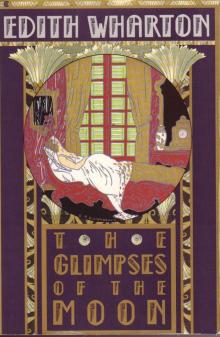 The Glimpses of the Moon
The Glimpses of the Moon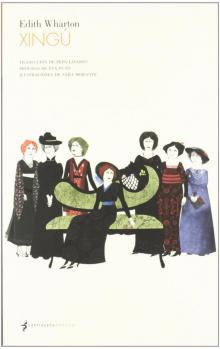 Xingu
Xingu The Fruit of the Tree
The Fruit of the Tree Fast and Loose
Fast and Loose Artemis to Actaeon and Other Verse
Artemis to Actaeon and Other Verse The Line of Least Resistance
The Line of Least Resistance The Lamp of Psyche
The Lamp of Psyche The Reckoning
The Reckoning Afterward
Afterward The New York Stories of Edith Wharton
The New York Stories of Edith Wharton The 2014 Halloween Horrors Megapack
The 2014 Halloween Horrors Megapack 'Copy': A Dialogue
'Copy': A Dialogue The Recovery
The Recovery The Fulness of Life
The Fulness of Life Early Short Stories Vol. 1
Early Short Stories Vol. 1 Tales of Men and Ghosts
Tales of Men and Ghosts The House of the Dead Hand
The House of the Dead Hand That Good May Come
That Good May Come The Buccaneers
The Buccaneers Other Times, Other Manners
Other Times, Other Manners The Hermit and the Wild Woman
The Hermit and the Wild Woman Kerfol
Kerfol The Duchess at Prayer
The Duchess at Prayer Bunner Sisters
Bunner Sisters The Choice
The Choice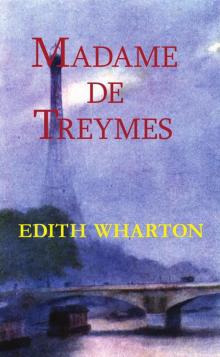 Madame De Treymes
Madame De Treymes Ethan Frome, Summer, Bunner Sisters
Ethan Frome, Summer, Bunner Sisters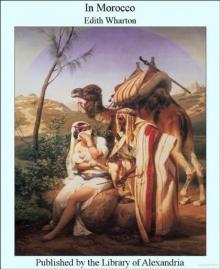 In Morocco
In Morocco The Valley of Decision
The Valley of Decision Age of Innocence (Barnes & Noble Classics Series)
Age of Innocence (Barnes & Noble Classics Series) The Angel at the Grave
The Angel at the Grave April Showers
April Showers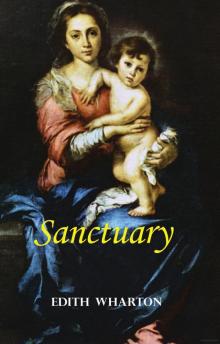 Sanctuary
Sanctuary The Bunner Sisters
The Bunner Sisters Mrs. Manstey's View
Mrs. Manstey's View Writing a War Story
Writing a War Story The Custom of the Country
The Custom of the Country In Trust
In Trust The Triumph of the Night
The Triumph of the Night The Hermit and the Wild Woman, and Other Stories
The Hermit and the Wild Woman, and Other Stories Roman Fever and Other Stories
Roman Fever and Other Stories The Mission of Jane
The Mission of Jane The Descent of Man and Other Stories
The Descent of Man and Other Stories Coming Home
Coming Home The Touchstone
The Touchstone Early Short Stories Vol. 2
Early Short Stories Vol. 2 Edith Wharton's Verse, 1879-1919, from various journals.
Edith Wharton's Verse, 1879-1919, from various journals.